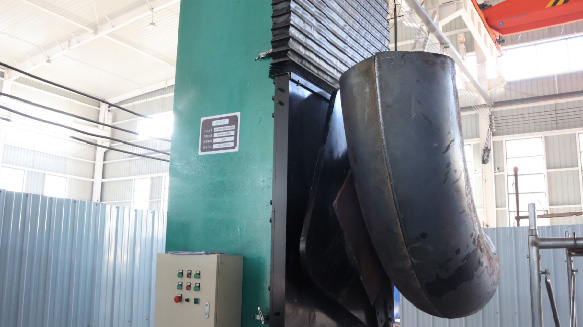- Phone
- Address
ZHENGGANG INDUSTRIAL PARK, YANSHAN COUNTY, CANGZHOU CITY, HEBEI PROVINCE, CHINA

Mainly used for automated welding of DN2000-DN600 specification bent pipes, with a maximum welding length of 2.6 meters and a maximum load-bearing capacity of 10T.
Advantages: It can adapt to the welding needs of bent pipes of different shapes and specifications, and has a wide range of applications.